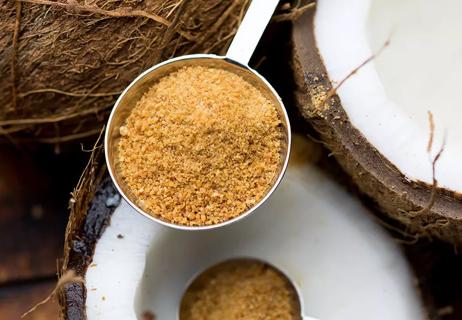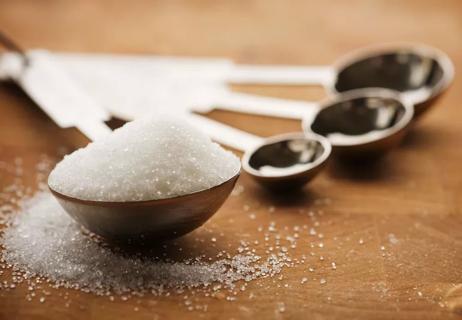What you need to know about these food felons

One day you read that whole-fat dairy products are less likely to contribute to cardiovascular disease than low-fat dairy products. The next day, your doctor tells you fat is unhealthy and recommends a low-fat diet. Then you read that fat isn’t as bad for you as sugar. What are you supposed to believe?
Advertisement
Cleveland Clinic is a non-profit academic medical center. Advertising on our site helps support our mission. We do not endorse non-Cleveland Clinic products or services. Policy
The American Heart Association (AHA), which keeps abreast of research on topics like this, gives both dietary components a thumbs-down.
“Both fat and sugar are bad for you,” says preventive cardiology dietitian Kate Patton, RD, LD. “However, we are talking about saturated fats, trans fats and added sugars. This is where some of the confusion lies.”
Saturated fats and trans fats are bad for you, period. Both prompt the creation of low-density lipoprotein (LDL) cholesterol, the type that causes coronary artery disease (CAD). Trans fats increase LDL cholesterol levels, decrease “good” high density lipoprotein (HDL) cholesterol levels and cause inflammation, which accelerates the development of coronary artery disease (CAD).
Saturated fats are found primarily in animal products They are also found in certain oils derived from plants, including coconut oil and palm oil.
If you need to lower your cholesterol, the AHA recommends you consume no more than 5 to 6% of your calories as saturated fats. Otherwise, the 2015-2020 Dietary Guidelines for Americans recommend limiting saturated fat to no more than 10% of total calories.
On the other hand, no amount of trans fat is safe to eat. Trans fats are not found in nature. They are a byproduct of the process that turns healthy oils into solid fats, such as margarine, and prevent bakery goods from going rancid.
Most people find a fat-free diet too hard to follow. The good news is that you don’t have to forgo all fats to stay healthy. Monounsaturated and polyunsaturated fats actually are good for your heart.
Advertisement
According to the AHA, replacing saturated fats in your diet with poly- and monounsaturated fats can lower the rate of cardiovascular disease. In other words, making the switch can have the same effect as taking statins.
“It’s good to incorporate these good fats into your diet, keeping in mind that all fats have 9 calories per gram,” says Patton.
Good sources of monounsaturated fats include olive oil, canola oil, avocados and nuts.
Omega-3 and omega-6 are types of polyunsaturated fats. Omega-3 fatty acids are essential fats that the body cannot make. They reduce risk of blood clots and lower inflammation. Sources of omega-3 fat include fatty fish, such as salmon and sardines, and walnuts and flaxseeds.
Omega-6 fats build healthy cells and nerve fibers. Sources include soybean, corn, sunflower and safflower oils.
Sugar straddles the line between healthy and unhealthy.
Some forms of sugar occur naturally in foods such as fruit (fructose) and milk (lactose).These are safe when consumed as part of a balanced, healthy diet.
The concern is primarily with added sugars. These are sugars (usually sucrose) that do not appear naturally in foods, but are added for taste. Sugar is the main attraction in foods such as candy, cookies and ice cream. Sugar also is hidden in unlikely places, including breads, cereals and tomato sauces. This makes it very easy to consume large amounts of sugar unknowingly.
“Excess intake of sugar is associated with increased risk of diabetes, obesity and hypertriglyceridemia,” says Patton.
Dietary guidelines issued by the U.S. Department of Health and Human Services and Department of Agriculture recommend women consume no more than 100 calories (six teaspoons or 25 grams) of added sugar a day. For men, it’s 150 calories (nine teaspoons or 36 grams).
Most manufactured products as well as restaurant and frozen foods contain sugar or fat for taste. This means many low-sugar products can have a high fat content, and low-fat products may have added sugar. How can you find out what’s in your food?
“I suggest reading nutrition facts labels, especially the ingredient list, and using an app to help you see where your calories are coming from,” says Patton.
This article originally appeared in Cleveland Clinic Heart Advisor.
Advertisement
Learn more about our editorial process.
Advertisement

A high intake of sugar can cause an increase in ‘bad’ cholesterol and a decrease in ‘good’ cholesterol

Too much added sugar early in life is linked to obesity, high blood pressure and Type 2 diabetes

Often labeled as ‘diabetes-friendly’ or ‘calorie-free,’ these sugar substitutes warrant caution

There is an indirect link between the sweet substance and the condition

It’s touted as a healthier alternative to cane sugar, but basically, well ... it’s still just sugar

Updated food label guidelines make it easier to track added sugars in your diet

Sugary foods don’t always taste sweet, and they may not say ‘sugar’ on the label

Don’t skip meals or go ‘cold turkey’ — eat a balanced diet and talk to your doctor instead

If you’re feeling short of breath, sleep can be tough — propping yourself up or sleeping on your side may help

If you fear the unknown or find yourself needing reassurance often, you may identify with this attachment style

If you’re looking to boost your gut health, it’s better to get fiber from whole foods